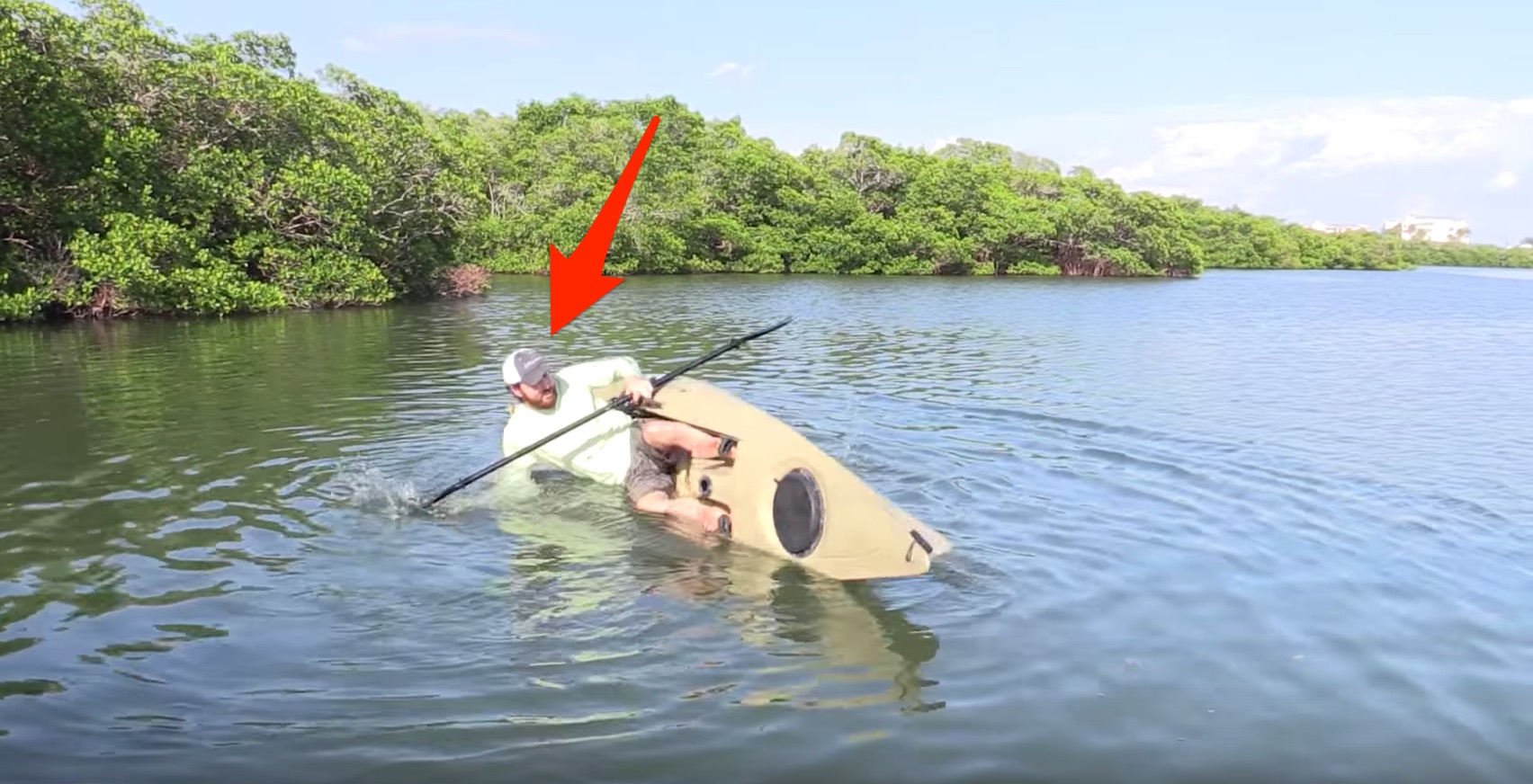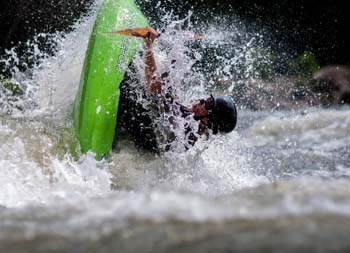Whether or not a kayak tips over easily depends on a number of factors, including the type of kayak, the skill level of the paddler, and the conditions of the water.
In general, kayaks are designed to be stable and maneuverable, but they can tip over if they are not properly balanced or if the conditions are too rough.
There are two main types of kayaks: recreational kayaks and touring kayaks. Recreational kayaks are designed for beginners and casual paddlers. They are typically wider and more stable than touring kayaks, making them less likely to tip over. Touring kayaks are designed for longer trips and more challenging conditions. They are typically narrower and faster than recreational kayaks, but they are also more unstable.
The skill level of the paddler also plays a role in how easily a kayak tips over. Beginners are more likely to tip over than experienced paddlers because they are not as familiar with the balance and handling of a kayak.
Finally, the conditions of the water can also affect how easily a kayak tips over. Kayaks are more likely to tip over in rough water, such as whitewater or choppy seas.
Here are some tips to help prevent a kayak from tipping over:
- Choose a kayak that is appropriate for your skill level and the conditions you will be paddling in.
- Stay centered in your kayak and avoid leaning too far to one side or the other.
- Use your paddle to brace yourself if you feel yourself starting to tip over.
- Practice paddling in different conditions so you can get a feel for how your kayak handles.
If you do tip over, don’t panic. The most important thing is to stay calm and try to right yourself. If you can’t right yourself, you can try to swim to shore or call for help.
Kayaks are designed to be stable and durable, but they can still flip over if you’re not careful. Here are a few things to keep in mind to avoid flipping your kayak: 1) Always wear a life jacket;
2) Don’t try to stand up in your kayak; 3) Be aware of your surroundings and paddle safely; 4) Don’t put yourself at risk by paddling in bad weather or dangerous conditions.
If you follow these tips, you’ll be much less likely to flip your kayak over.
If you’re new to kayaking, you might be wondering if kayaks flip over easily. The answer is yes and no. It depends on the type of kayak and how it’s being used.
Some kayaks are designed to flip over easily, while others are not. Here’s a look at some of the factors that can affect whether or not a kayak will flip over.
The first factor to consider is the type of kayak.
Some kayaks, like whitewater kayaks, are designed to flips easily so that the paddler can right themselves if they capsize. Other types of kayaks, like touring or sea kayaks, are not designed to flip over easily and may even have extra flotation devices to prevent flipping.
The second factor is how the kayak is being used.
If you’re paddling in calm water, it’s unlikely that your kayak will flip over unless you capsized on purpose or had an accident. However, if you’re paddling in rough water or waves, there’s a much higher chance that your kayak could flip over. Even experienced paddlers can capsize in these conditions if they’re not careful.
So, do Kayaks Flip Over Easily? It depends on the type of Kayak and how it’s being used!

Credit: saltstrong
Why Do Kayaks Flip Over?
There are a few reasons why kayaks may flip over. One reason is if the kayak becomes unstable due to incorrect body positioning. If the weight in the kayak is not evenly distributed, it can cause the kayak to tip over.
Another reason why kayaks may flip is because of waves or other water conditions. If a wave hits the side of the kayak, it can easily capsize the boat. Last but not least, wind can also be a factor in flipping a kayak.
If there is a strong gust of wind, it can push the kayak over.
If you’re new to Kayaking, it’s important to know how to prevent your Kayak from flipping over. First and foremost, always make sure that you distribute your weight evenly in the Kayak.
Secondly, be aware of your surroundings and try to avoid being in areas with high waves or strong currents. And lastly, pay attention to the weather conditions and be cautious of strong winds when Kayaking.
What Happens If Your Kayak Flips Over?
If your kayak flips over, you may end up in the water. Depending on the conditions, this could be dangerous. If you are in cold water, you could get hypothermia.
If the water is fast moving, you could get swept away. Always wear a life jacket when kayaking!
How Do I Stop My Kayak from Flipping?
If you’re new to kayaking, the thought of flipping over can be pretty daunting. But don’t worry, it’s not as difficult as it seems! Here are a few tips to help you stay upright:
1. Paddle with proper technique – One of the most common mistakes people make is paddling too hard on one side and not enough on the other. This can cause your kayak to veer off course and eventually flip over. So be sure to paddle evenly on both sides, using gentle strokes.
2. Avoid sudden movements – Another mistake that can lead to a flipped kayak is making sudden movements or reaching for something while you’re paddling. This can destabilize your boat and cause it to tip over. So try to stay still and avoid any unnecessary movement while you’re paddling.
3. Don’t forget about wind and waves – If there’s wind or waves present, they can also play a role in flipping your kayak. Be sure to paddle into the waves (not parallel to them) so that they don’t hit your boat directly and capsized it. And if there’s strong wind, paddle at an angle into the wind so that it doesn’t push your boat over.
4. Choose the right kayak – Not all kayaks are created equal! Some are more stable than others, so be sure to do your research before purchasing one. And if you’re ever in doubt, always err on the side of caution and choose a larger and more stable kayak over a smaller and less stable one.
5. Wear a life jacket – This should go without saying, but always wear a life jacket when Kayaking!
Is a Kayak Easier to Flip Than a Canoe?
A kayak is easier to flip than a canoe for several reasons. First, kayaks have a higher center of gravity than canoes, which makes them more likely to tip over. Second, kayaks are narrower than canoes, which makes them more unstable and difficult to paddle in windy conditions.
Third, kayaks have less buoyancy than canoes, which means that they will sink faster if they capsize. Finally, kayaks are less stable when paddled solo than canoes, making it more likely that you will flip your kayak if you paddle alone.
Kayak Self Rescue: Re Enter and Roll
Kayaks That Don’T Tip Over
Kayaks That Don’t Tip Over
We all know the feeling. You’re out on the water, enjoying a peaceful paddle, when suddenly your kayak tips over and you’re dumped into the drink.
It’s not a pleasant experience, to say the least. But what if there was a kayak that simply couldn’t tip over? No more worrying about capsizing – you could relax and enjoy your time on the water without a care in the world!
Well, such a kayak does exist, and it’s called the Puffin Kayak. This innovative design is based on the traditional Inuit kayak, which has been used for centuries in some of the most treacherous waters in the world. The Puffin Kayak is virtually unsinkable and extremely stable, thanks to its unique hull design.
It’s also incredibly lightweight and easy to transport, making it perfect for those who want to explore remote waterways.
So if you’re sick of tipping over in your kayak, or just want to try something different, check out the Puffin Kayak – it just might be perfect for you!
Conclusion
No, kayaks do not flip over easily. They are designed to be stable and provide a comfortable, dry ride. However, if you do capsize or roll your kayak, it is easy to get back in.
Related: Why Don’t Boats Tip Over
